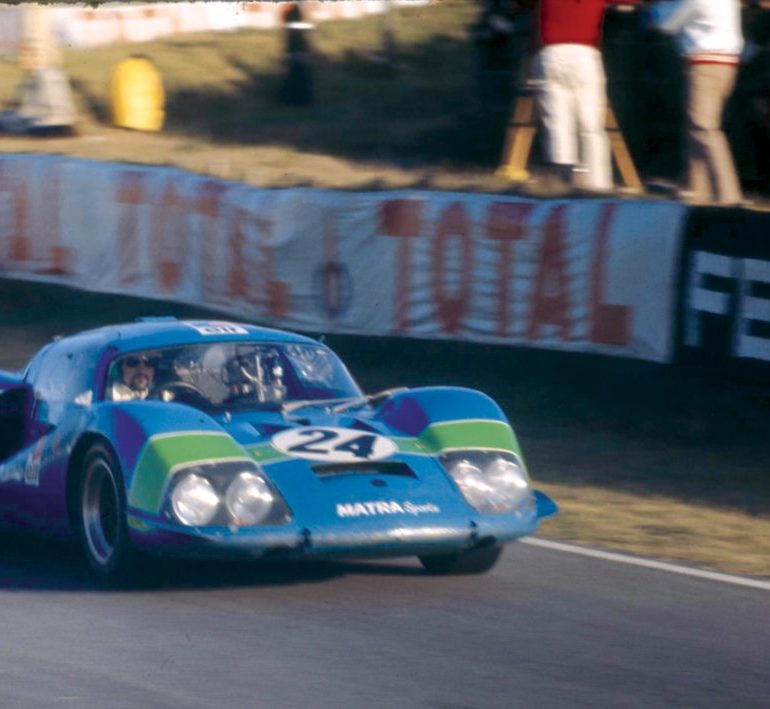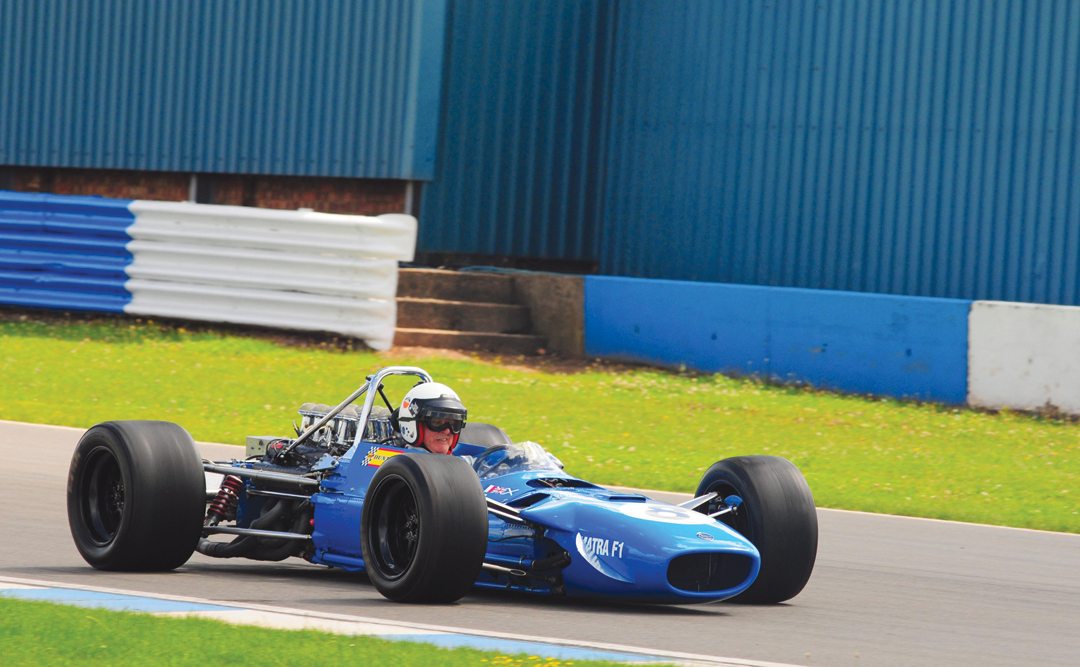Nearly 50 years ago I stood on the bank at Mulsanne Corner and watched the bright French sun flash on the windscreen of the #24 Matra driven by Henri Pescarolo and Johnny Servoz-Gavin. There were so many things that made a lasting impression on my first visit to Le Mans all those years ago, but it never occurred to me that that Matra would make such a lasting impact, and that years later I would have developed friendships with both Pescarolo and “Servoz,” that I would end up writing a book about Matra sports cars, be involved in a serious film about the cars, and get to drive some of those fantastic machines.
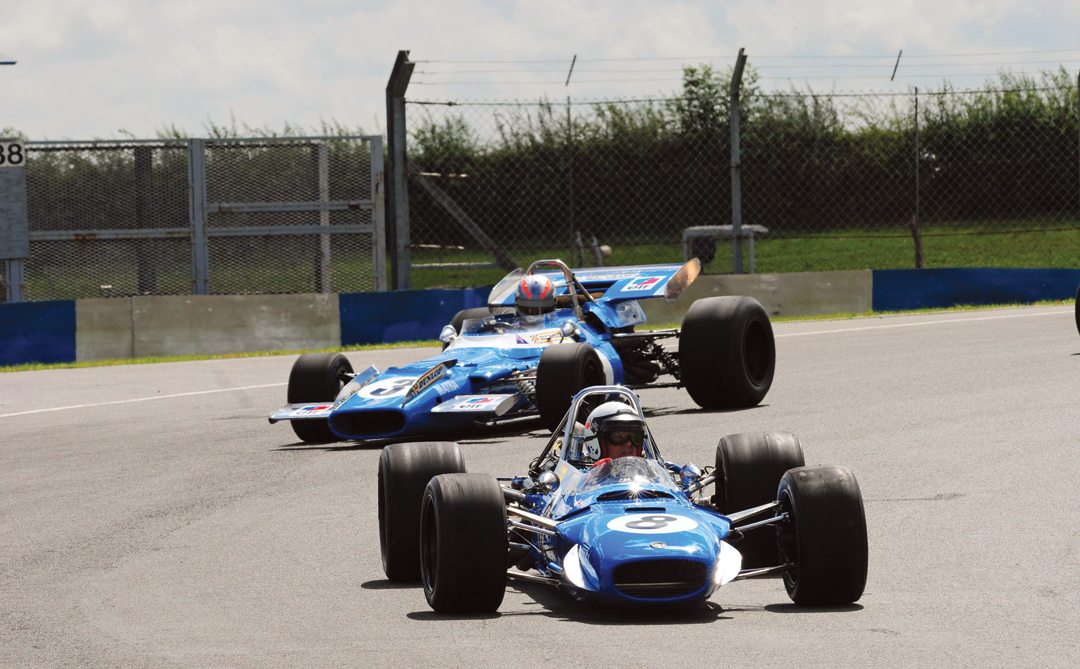
In those early days of 1968, the racing side of Matra was getting going, but the dominance that came later was still a dream. Matra had decided, however, that they would win at Le Mans and that target spurred the company on for several years until, of course, they achieved that goal, having failed to finish the 24 Hours in 1966, 1967 and 1968. Then they managed 4th, 5th and 7th in 1969, again failed in 1970 and 1971, before the famous win for Graham Hill and Pescarolo came in 1972. Then they did it again in 1973 and 1974! In 1973, I was able to do some endurance races in Europe at Spa, Nürburgring and Österreichring. At Spa, my team spent four days in the pit next to Matra, and as exciting as that was it also had an effect on my hearing. The shriek of the great 12-cylinder engine was wonderful…but painful. At the Nürburgring, my co-driver moved over to let François Cevert in his Matra MS670 past and ended up in the bushes, and at Spa I had a close encounter with Pescarolo when we both were suddenly rushing toward an upside-down Capri at Stavelot. In avoidance, we brushed each other and many years later Pescarolo reminded me that I still owed the French government (which owned Matra) a replacement mirror!
Driving the MS670B
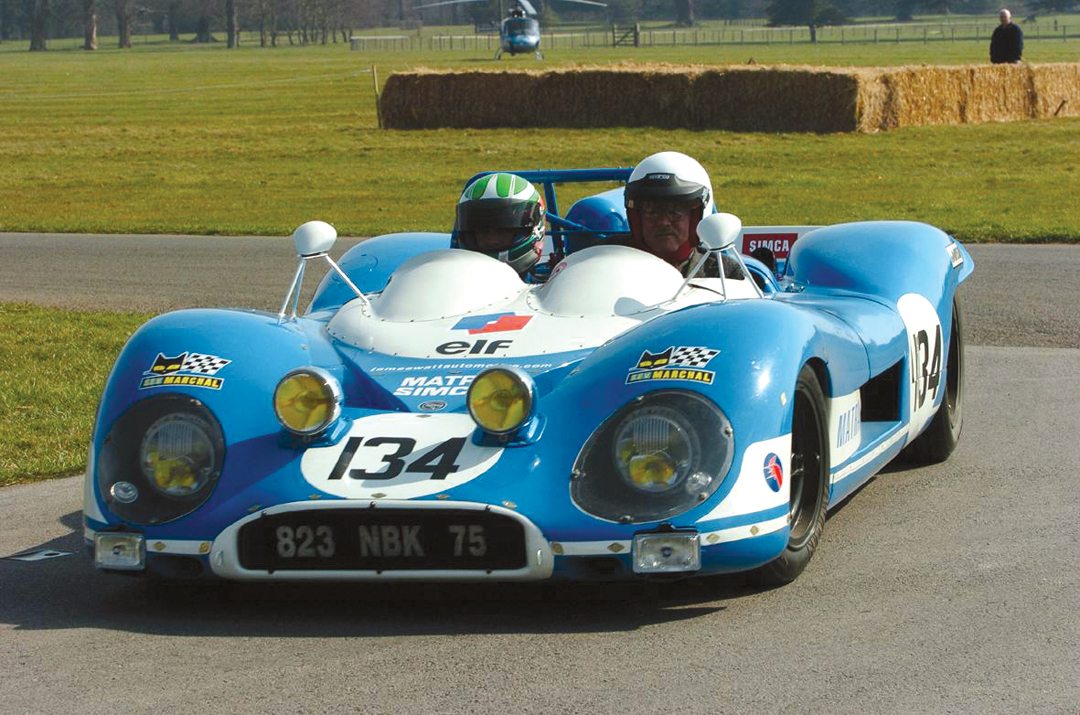
Readers with a long memory may recall that I did a profile on the 1974 Matra MS670B (January 2010). That was a car which had done very few races, in fact only LeMans in 1974 with Jean-Pierre Jabouille and François Migault who brought it home in 3rd place behind Pescarolo and Larrousse, who won. Rick and Rob Hall were running that car at the Goodwood Festival of Speed in 2009 and car owner Abe Kogan agreed that I should drive it on the Goodwood hill. This was just at the time that I was completing Matra Sports Cars, the history of all the sports racing Matras from 1966 to 1974. So this was a great opportunity to actually get behind the wheel having been immersed in Matra history and spending time with people from Matra’s past.
Driving the car itself was fantastic, especially on the tight and challenging Goodwood hillclimb course. Just as amazing was the response to the car being at Goodwood, and it was always surrounded by masses of fans. In the tight confines of Goodwood, with crowds of people around, I was surprised by how manageable and well behaved that car was. The clutch wasn’t temperamental and once warmed up the engine ran smoothly through the whole process of trickling around the paddock down to the start line. The thrill, of course, was getting to grip with the power as the car rushed past the front of Goodwood House before thousands of spectators. I was more than slightly nervous winding my way up the very narrow and twisty piece of road, past the threatening looking flint stone wall on the left. The car behaved superbly the whole time, and it was a privilege to have had the chance to drive it.
It was around this time that I managed to get a run as a passenger in one of the MS660 cars that had featured in the Tour de France in 1970 and 1971. It was a revelation to think that a car competitive in the World Sportscar Championship could not only survive a testing event on public roads and special stages, but actually win it…not just once but twice. I had a short run at a Goodwood press day…an indicator of what an exciting experience it must have been for the guy in the passenger seat!
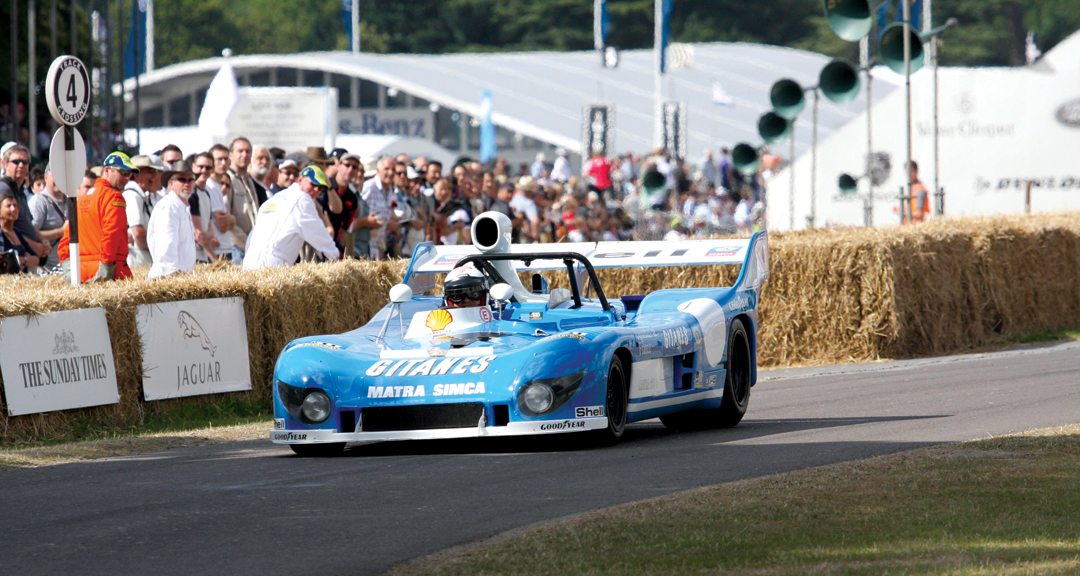
Abe Kogan, well known in historic motor racing circles had worked hard to find some of the Matra cars, none of which had been involved in racing since the 1970s. He set about to change that and mounted a strong effort to start to bring Matra back into racing. It isn’t surprising that he has become known as “Mr. Matra.” With a small number of racecar preparers, and particularly in conjunction with Hall and Hall in Bourn in England, Kogan has really forced the rebirth of Matra so that they became not only participants in international historic racing, but were also very successful. Between 2008 and 2014, Matras took part in 38 international races in the UK, Europe and Australia, and also featured at the Monaco Historic Grand Prix. The results included 11 wins, three 2nd places and ten 3rd places. This was the first time that a particular marque, which had raced in period, both in single-seaters and sports cars, had actually been resurrected and was again racing successfully.
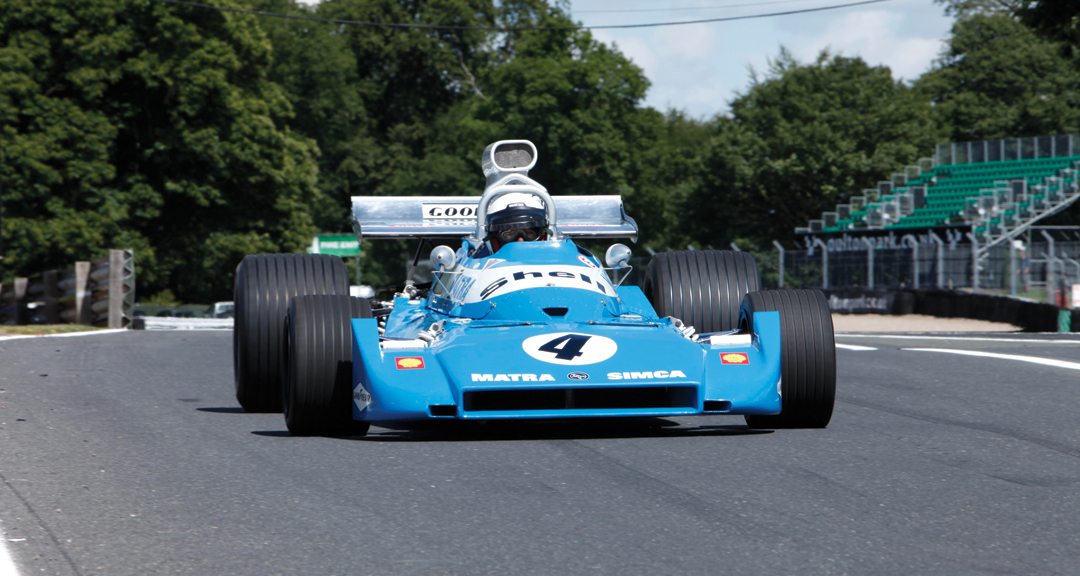
It was during this period, as Abe Kogan’s efforts to bring Matra back to the fore were bearing fruit, that he came up with idea of making a film about Matra, its history and return to competition, as nothing like this had been done in English. Hence the Bigger Picture Media Company with father and son Mike and Christian Dixon took on the commission to document this unique story of Matra and its return, a process that took some four years to complete. The aim was ambitious: to record the history through period films and interviews and to feature the work that had gone into bringing Matra back to life. This would include not only filming some of the historic events, but individual filming of all the cars that were available. It was at this point that I came on board as the technical consultant. What that means is that any errors of fact are down to me! It was a stunning experience to work alongside so many important people from Matra history—Pescarolo, Larrousse and Jean-Pierre Beltoise, who sadly died before the project was complete.
Mixing with Matras..the MS10
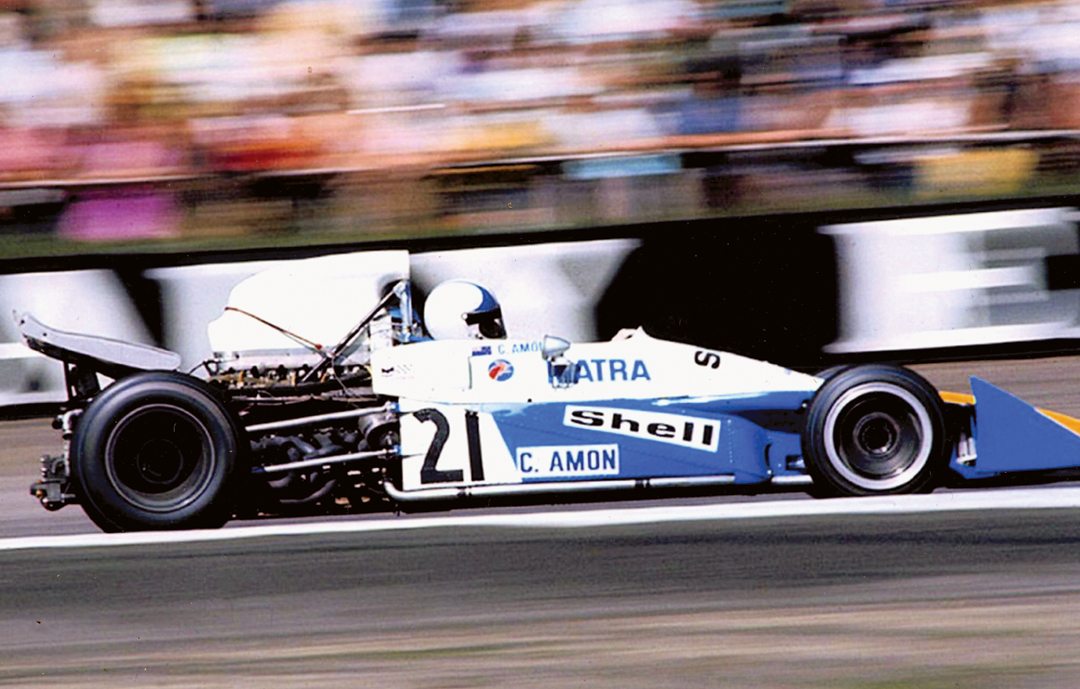
The Donington racing circuit was hired for some serious filming work, and two sports prototypes were brought along in addition to an MS9, MS10, MS11 and MS80 Formula One car and an early MS5 F2 machine. The intention was to film all the cars on track, singly and in a group, and I was asked which one I would like to drive—now there’s a question you would like to be asked!
I opted for the MS10, chassis number 01, the Cosworth-powered car run by Ken Tyrrell for Jackie Stewart at five races in 1968, was the T-car at three races that year, ran one race in 1969 and was the T-car once that year, all with Jackie Stewart behind the wheel. The MS9, also with Cosworth engine, had run in one event, the South African Grand Prix in early 1968. MS10 turned out to be a real workhorse. Stewart drove it for the first time at the Monaco Grand Prix in 1968 where it put in a good performance before being forced into retirement. MS10-01 then went on to gain a creditable 4th place at the Belgian Grand Prix at Spa, before acting as the T-car at both the Dutch and German races. Stewart retired again at the Italian Grand Prix, and then finished 6th in Canada before using the car as the T-car once again in Mexico. In early 1969, Stewart took the car’s one and only victory in South Africa before being used once more as the T-car at Monaco.
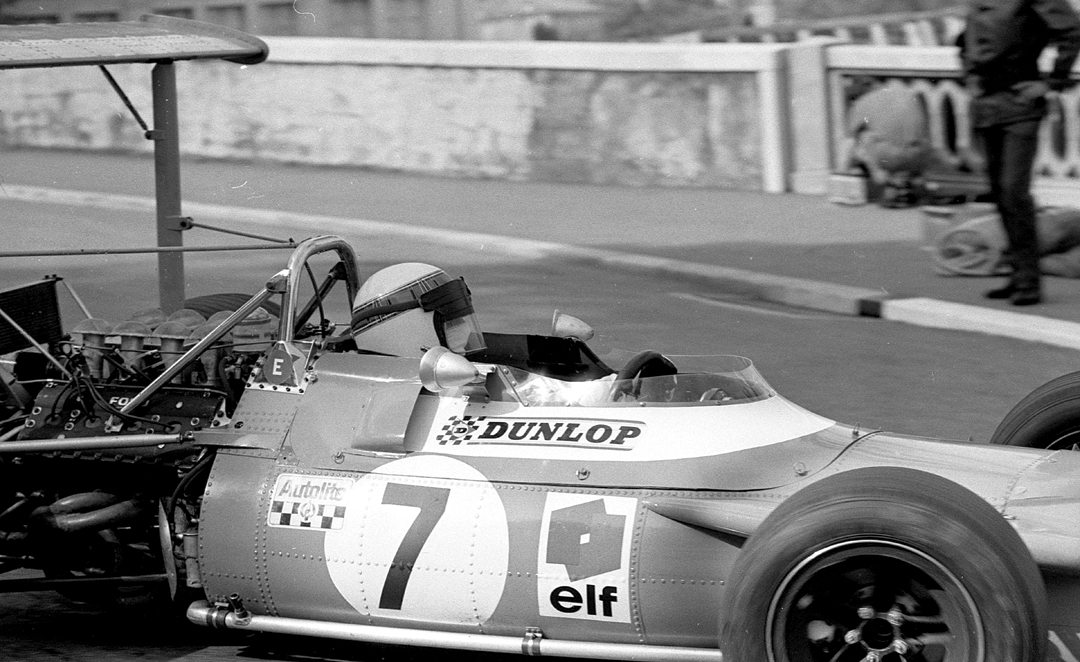
Photo: Ed McDonough
It was during 1968 that Tyrrell ran the Ford-powered car for Stewart, while the works Matra team was running the MS11 with the V12 Matra engine for Beltoise, Servoz-Gavin and, occasionally, Pescarolo. Then Tyrrell moved to running the Cosworth in the MS80 for Stewart in 1969, while Beltoise also had an MS80, with Servoz-Gavin having occasional races in the MS84 four-wheel-drive car. It could be said that Matra was spreading its resources pretty thin—but then they had a lot of resources.
One of the interesting aspects of our track day at Donington was to be on track with the MS9, MS10, the MS11 and MS80 all at the same time. These were all serious cars, and it is interesting to ponder the thinking that had Matra running three different models at the same time. BRM had tried that with no good results and Matra was also trying to build a race-winning sports car as well. The sports car program eventually won out over the F1 effort.
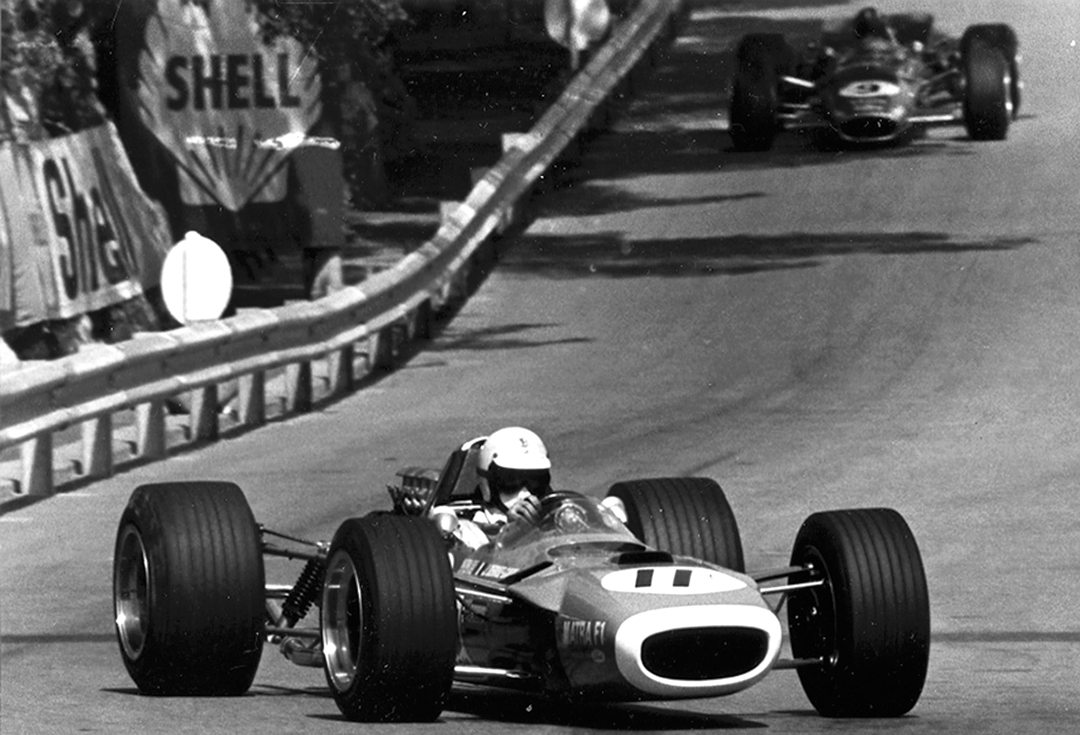
Photo: Ed McDonough Collection
Much like my experience with the MS670B sports prototype at Goodwood, the MS10 was beautifully prepared and very easy to get to grips with, something which is quite important when you are about to drive in close formation in a group of seven cars to get nice, “tight” shots for the film. Good organization and planning meant we got some easy laps to get comfortable, before forming up for some fast, flying laps in a group.
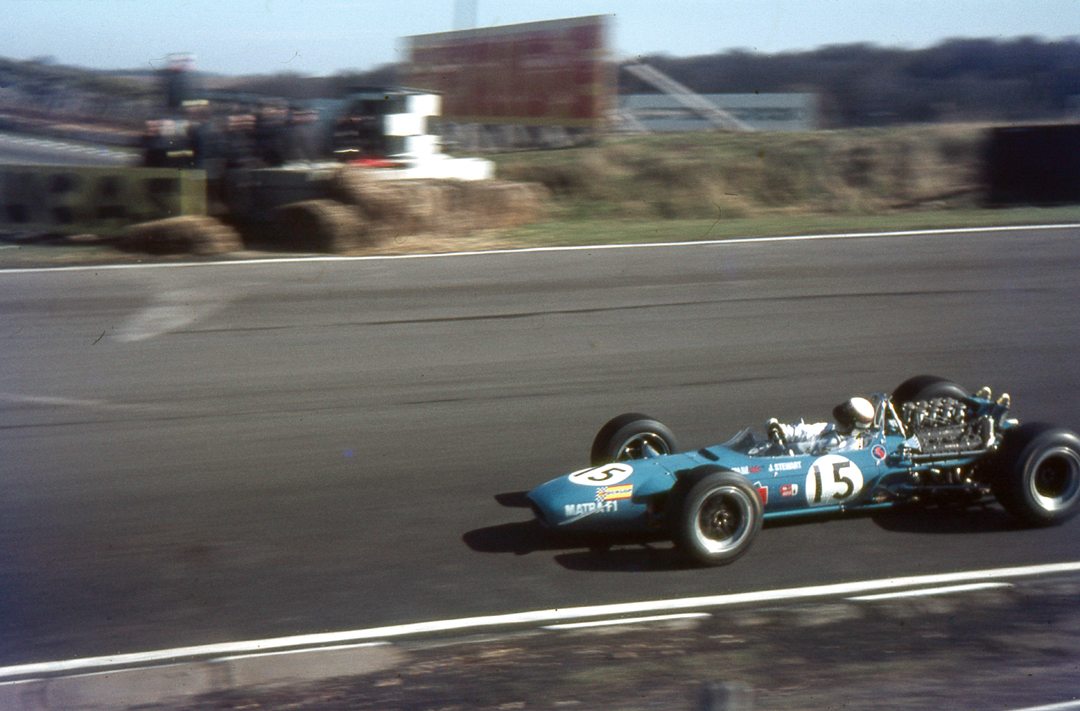
Photo: Keith Booker
Jackie Stewart always liked the MS10 and found it a flexible car that he could develop as the season progressed. In comparison with modern F1 cars, the Matra may appear to be “old technology,” but for something nearly 50 years old it was, to me, state of the art. The Cosworth engine had been improved through 1968 and the power curve was much more manageable by then. Whereas it had started out with the power coming on suddenly with a bang, it became smoother so that more could be extracted from the car without throwing it about. It was a far cry from the previous year’s Lotus 49 with the earlier version of the Cosworth engine, which was something of a handful.
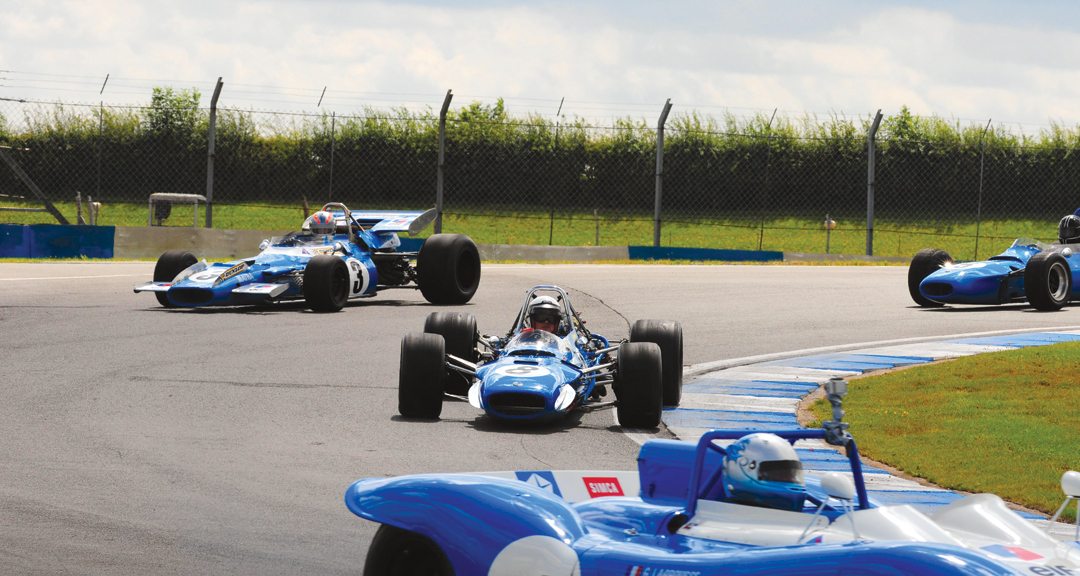
There was just enough time in our laps behind and in front of a camera car to take in what it was like for Stewart racing in period.—here was not only the MS10 in which he had his first Matra success, but I was running alongside the MS80 in which he had six victories in 1969. Both were quite competitive cars, the MS80 with a slightly more sophisticated chassis. Jackie Stewart’s own input to the Matra film is largely around the approach to chassis design that Matra followed, building a strong but safe car, one in which he always felt comfortable.
Icon time—the MS120
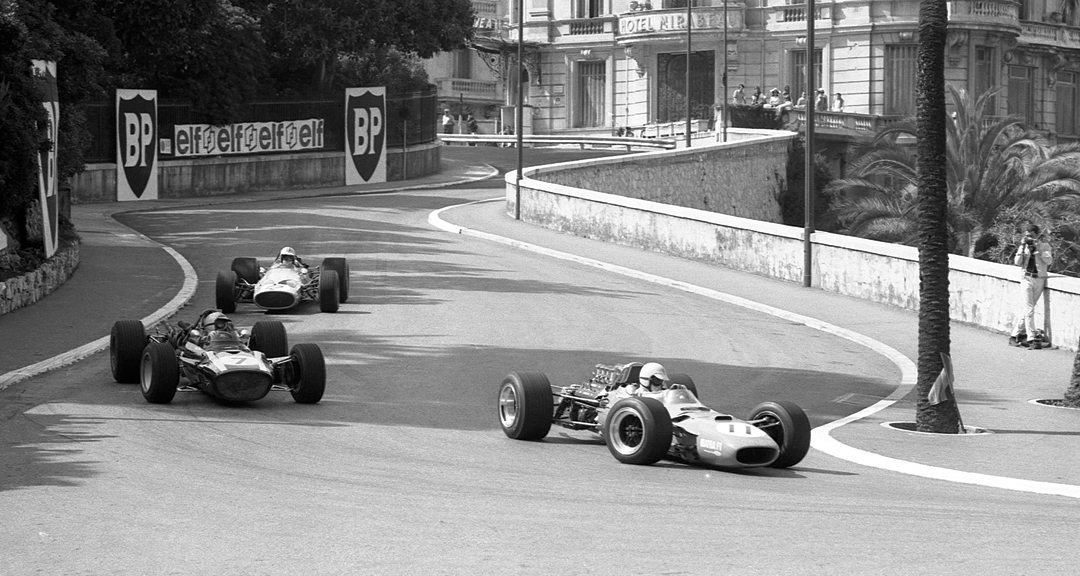
Photo: Ed McDonough
Chris Amon was one of my all time favorite drivers. Not only was he a supremely talented racer and test driver, but there was something about his personality that made you admire the way he put up with a vast number of disappointments. One of my journalist highlights was sitting down with him at Goodwood when he visited some years ago having been away from the sport for a long time. We had lunch together and had a long interview, mainly about his relationship with Pedro Rodriguez. He said he was sure no one at Goodwood would recognize or remember him. He was stunned when he discovered just how wrong he was. That experience helped to bring him back to the sport, and he remained more active in motor racing in the years up to his untimely death in August, 2016. He had indeed become very impressed with the success of one of his favorite cars, the MS120C in historic races.
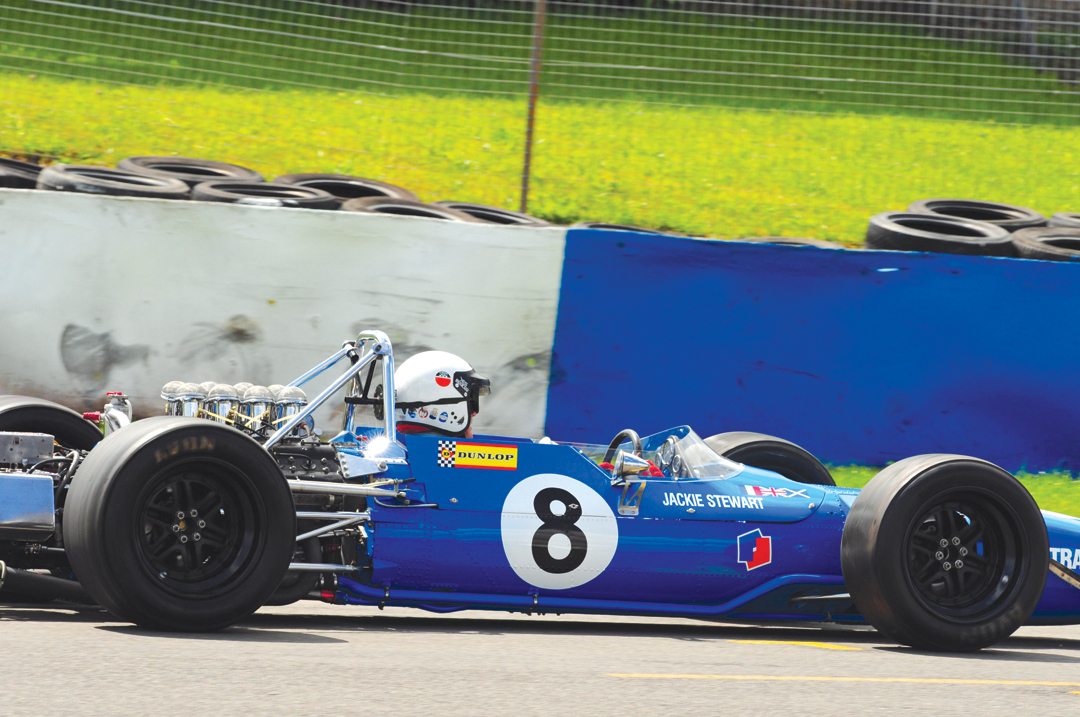
Abe Kogan won his class and 2nd overall in the 2008 FIA Historic Masters F1 European Championship in MS120C chassis 06, and this was against many newer and supposedly quicker F1 cars. In August 2014, seven Matras were the special guest demonstration cars at Oulton Park circuit for Carfest North, a rapidly growing motoring charity event fronted by UK media star Chris Evans. This was another opportunity for filming and this time the lineup included the MS120C-06, which I would be driving. Oulton Park is a great sweeping circuit so I was very pleased to be invited to pilot this important machine.
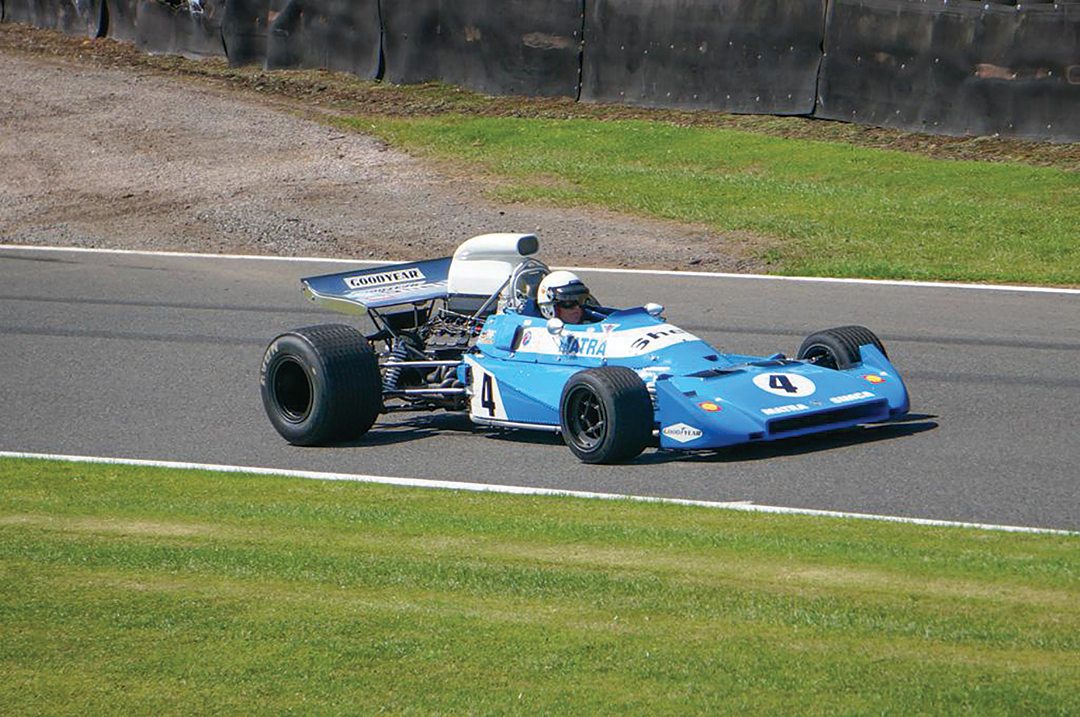
Chris Amon never won a championship Grand Prix—as is well known—but he did win the non-championship Argentine GP in 1971 in an MS120. He sampled MS120-06 in 120b format for the first time at Monaco, when he used it as the T-car in practice and then retired in the race in MS120b-05. At Zandvoort, 06 was the T-car again, and this time his retirement was in 04. The car was a beautiful design, overweight and fragile, but it was fabulous to watch and listen to. Amon and Beltoise brought many more fans to Matra in those years. At the French Grand Prix at Circuit Paul Ricard, Amon raced MS120B-06 for the first time and finished 5th with Beltoise 7th. Later in July, Amon was at Silverstone for the British Grand Prix in 06 and had a hard race, finishing down in 11th, with Beltoise 7th. The car retired at the German Grand Prix, and at the Italian race at Monza, Amon managed 6th in 06. The season didn’t end on a good note, with a 10th place in Canada and a 12th in the USA. Nevertheless, it was more than clear that Amon was always driving as hard as possible.
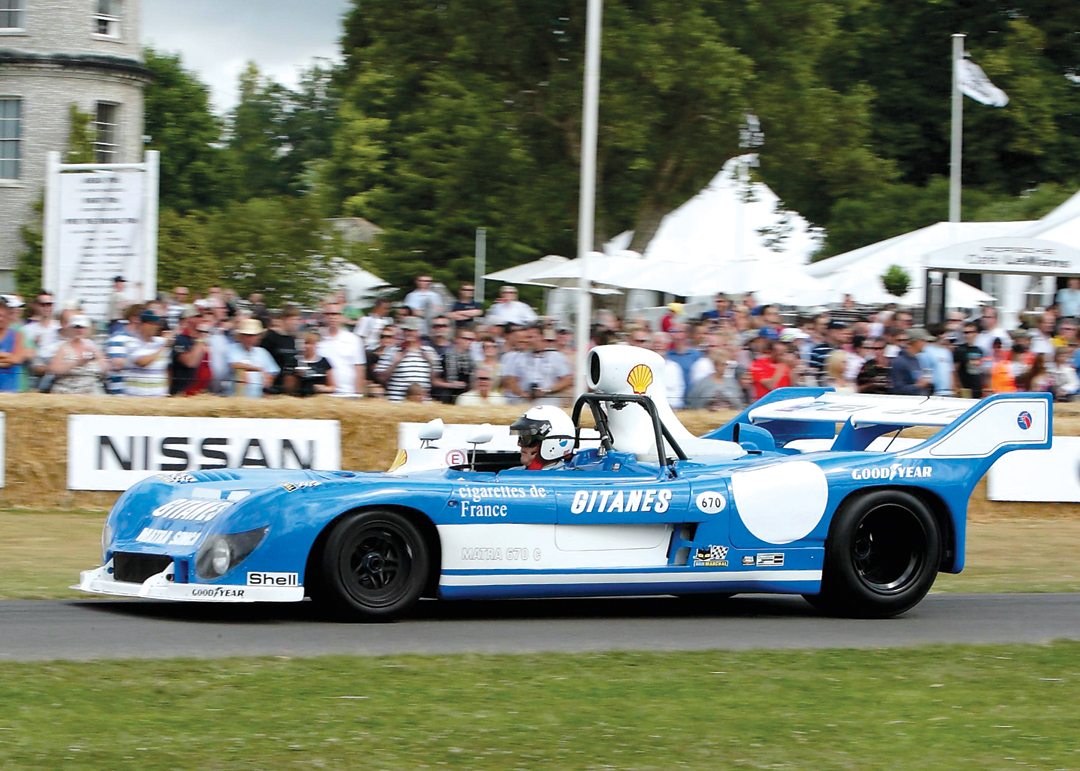
Photo: Peter Collins
Some modifications were made for 1972, and the car emerged as MS120C-06. Chris drove it five times before moving over to a slightly improved 07. Then 06 notched up a non-finish in Argentina and a fairly lowly 15th in South Africa. At the Spanish Grand Prix there was another failure to get to the flag, but a good 6th place was the reward for much hard work at Monaco. The Belgian Grand Prix saw another 6th-place result and that was the end of 06’s career in period. Amon managed a 4th and a 5th in 07, and ended up 9th in the drivers championship. This was more or less the end of Matra’s serious efforts in Formula One, though their engines would power a Shadow in 1975 and Ligier Grand Prix cars in 1976, 1977, 1979 and 1981 when Jacques Lafitte achieved wins in Austria and Canada.
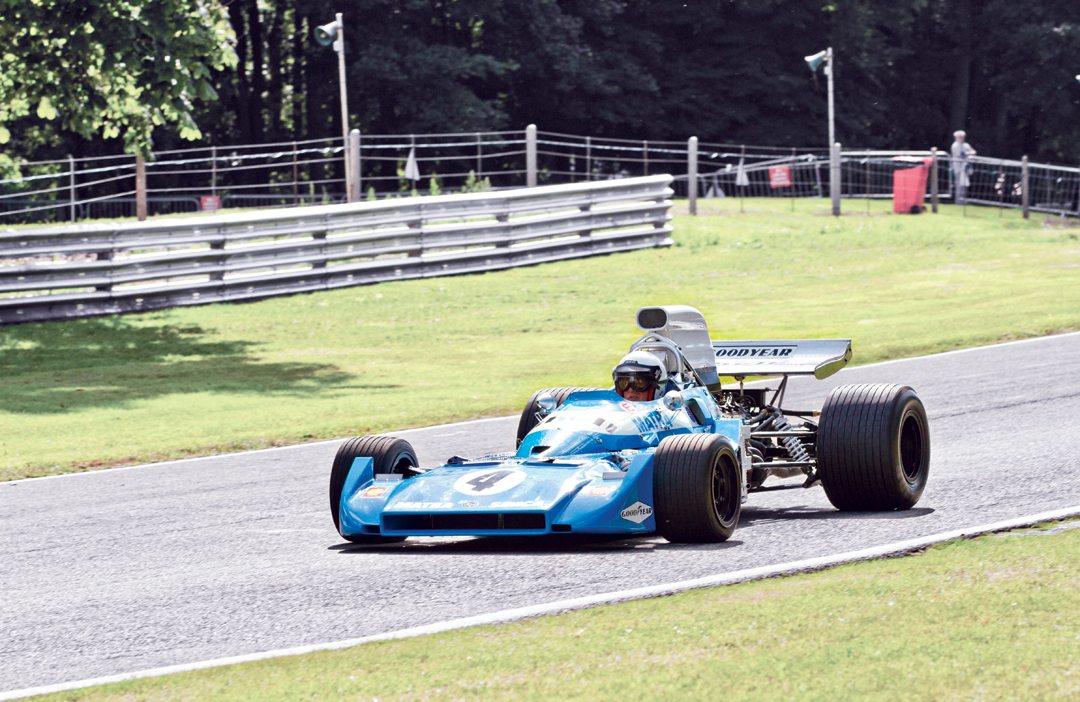
Photo: Simon Lewis
So, an impressive amount of history had become the provenance of this car, something I could not help but be aware of as I slid into the seat at a crowded Oulton Park. The car was on intermediate treaded tires for the morning run and the circuit was slightly damp, which meant it needed to be treated very carefully. The V12 seemed to have very much the same characteristics of the sports prototype, though pulling less weight meant the revs went up rather quicker. A few laps were enough to get the general feel of the car, so when it dried up later in the day I was anticipating a more exciting experience. I certainly had one as the MS120c just ate up the bends and corners at Oulton Park and things seemed to be happening very quickly. I remember thinking “don’t do anything stupid”, “get on with it” and “this is great” all at the same time. Because it was a Matra demonstration and not a race, there would be too few laps, so the experience had to be packed into a small number of miles. I was somewhat mesmerized by how quickly the rev counter needle moved, so everything had to be done carefully and smoothly. The handling was ideal and there seemed to be no tendency toward either oversteer or understeer…it just went where you wanted it to go. Oulton has some challenging downhill, off-camber bends, and it felt so good just to hold the throttle down through these—pushing hard in third gear. I envied Amon’s having had so many drives in this car. Ironically, it’s going better now than it did in period! I phoned Chris Amon after that weekend to tell him I had driven his car. “Lucky you,” he said, and he meant it.
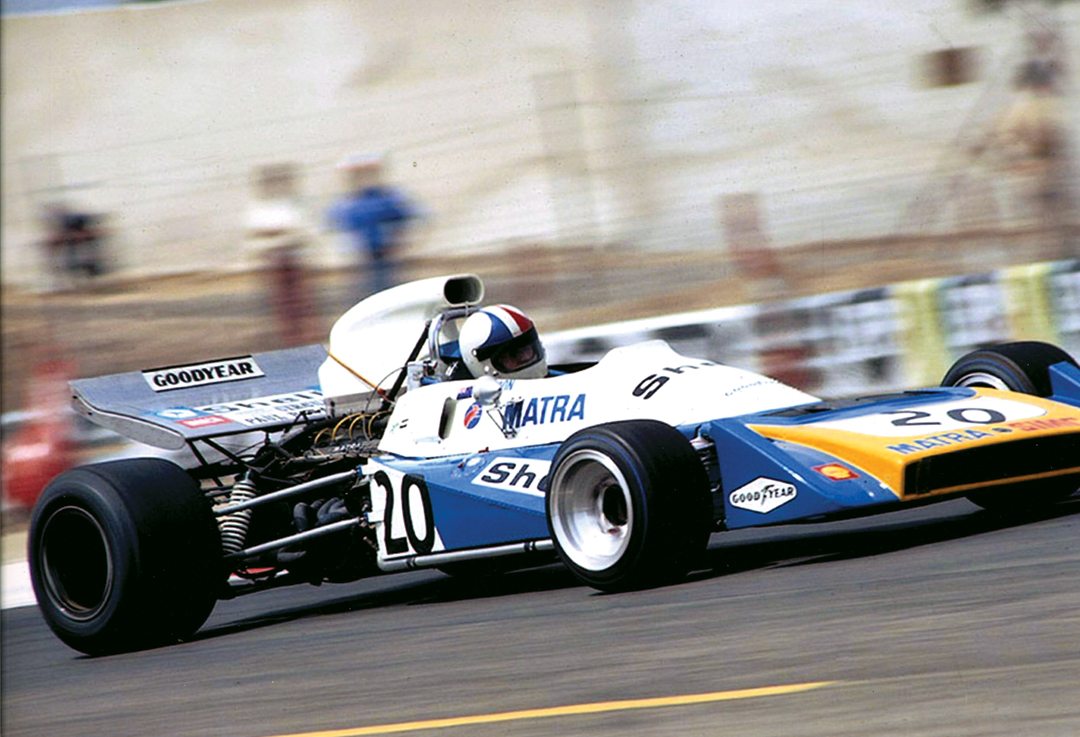
Photo: H. Brauer
The Matras continue to run in historic events, thanks to all that work by Hall and Hall, Zul Racing, Nicholson McLaren Engines and, of course, Abe Kogan. A couple of the cars are now up for sale via Hall and Hall, so somebody else is in for a treat. I am very pleased to have been on this historic journey. I hope you find the video we made…and enjoy it!


